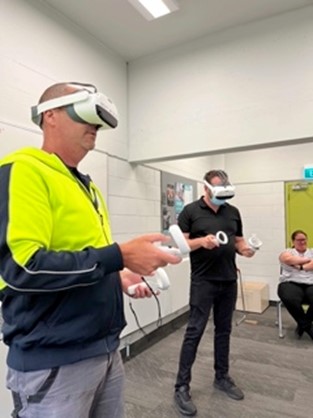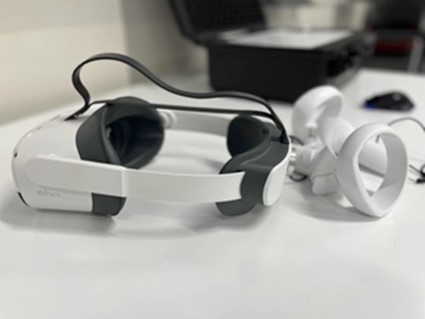Some aspects of vocational training are just not suited for the classroom. Take for example the requirement for trade akōnga to learn on the job firefighting skills. Providing real life situations for learning can create significant H & S issues as well as unnecessary risk. So, when the Woolston campus was offered the chance to take part in a Virtual Reality (VR) pilot that would bring to life content through workplace simulations, it seemed like a sensible solution to a previously tricky problem.
Not only did the VR pilot enable enhanced learning through simulations but it also provided the opportunity to evaluate how future use of the technology could be managed in a vocational learning space with multiple trade classes.

The Woolston campus partnered with Australian based VR training firm, NextWorld Enterprises, Ara for the project with H & S selected as the focus as it is common content to all areas of Trades. NextWorld supplied two Pico VR headsets and a library of workplace skills applications with funding for the pilot provided by the Ara Foundation.
Ara Educational Developer, Alan Hoskin, said the first step in the implementation process was to get kaiako on board with the pilot programme. As it turned out this wasn’t an issue with high levels of interest and engagement from kaiako who could see the potential to enhance akōnga health and safety skills in a safe environment and more importantly keep them engaged.
“An important aspect of the pilot was to investigate how kaiako could implement a VR simulation into their programme effectively when there were a limited number of headsets available. Several options were explored but universally it was settled on having one kaiako take the class through conventional activities while another kaiako worked with a small group on the VR. Akōnga were then rotated through the simulation. This worked well as it limited the time akōnga stood around waiting for their turn with the headsets,” said Alan.

Built into the VR technology is the ability for Kaiako to assess akōnga competence, with the system recording answers to quiz questions and tracking akonga eye movement, skills in handling equipment and decision making. For example, the site hazard simulation recorded if akōnga had seen and identified a hazard and similarly in the fire extinguisher simulation the system recorded if the extinguisher was operated correctly, and if the right extinguisher was used in a variety of situations. The advantage of this was that the learner was assessed on their actions and not just their recall of content.
The system also enabled the simulation exercise to be screencast to a monitor so kaiako could view the akōnga experience in real time.
Most importantly feedback from akonga was extremely positive.

“Akōnga that participated said that the VR simulation was more fun than learning from a book or hearing someone talk. The ability to actively participate in learning new skills and content was engaging and kaiako, recognised the potential of VR to teach and reinforce skills while engaging akōnga,” said Alan.
In another advantage for both akōnga and kaiako the technology also allowed for the gathering of analytics, useful in identifying gaps in knowledge and/or skills.
But it wasn’t all smooth sailing with both kaiako and akōnga identifying some issues with the translation of Australian experiences to our New Zealand environment. For example, the differences between the two countries in labelling fire extinguishers. Data collection was also reliant on a secure internet connection which proved challenging during some parts of the exercise. However, these issues were considered minor when weighed up against the benefits that VR brings to the learning environment in terms of engagement and opportunities to be involved in real life simulations. Expect to see more of this on campus in future!